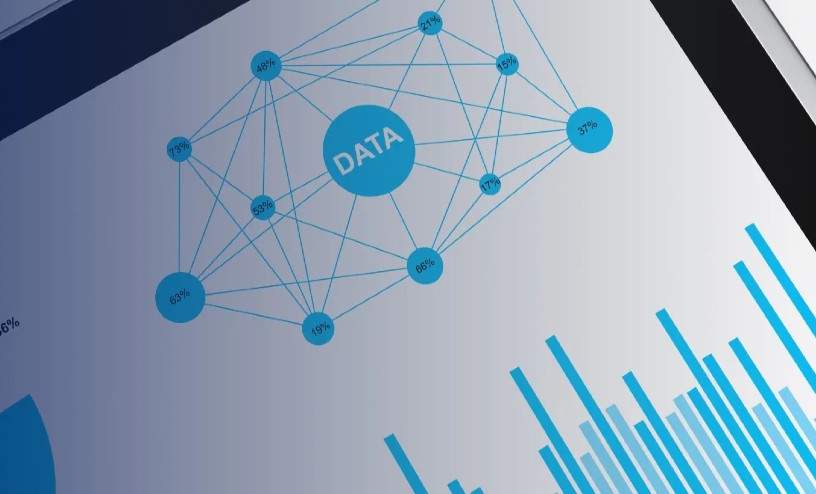
Self-service business intelligence (BI) is the self-evaluation of the business data. Here people do not take help from any BI team or experts. This concept has been around in companies for many years and is still in practice.
There are some self-service business intelligence mechanisms and tools enabling businesses in their data mining and analysis. This concept helps improve the decision-making power across the business by offering them one source of data in the BI ecosystem.
The growing need for flexible and reliable analysis and reporting increases the demand for this concept is high these days.
Apart from its wide definition, this concept has many aspects. Its overall concept also depends on the specific need of particular users’ roles. This concept can help different user roles to perform their roles aptly.
Usually, users use this concept just to filter and group data. But the power users might integrate the current local information from multiple sources independently to generate necessary reports. It is, therefore, the use of this system is different in different BI environments as per the users’ roles and requirements.
Three Types of BI Users
BI users are of three types with three different roles which often overlap and alter as per the given task.
1. Casual Users
Such standard users account for about 70 percent of all users. They make the largest chunk of users of this concept. Generally, they are not experts with limited skill to perform their task given their specific business needs. This is the reason, analysis, dashboards, and flexible reports are enough to suffice their self-service BI requirements mostly.
2. Power Users
Such people consist of around 25 percent of all users – quite lesser in larger BI ecosystems. You can consider them as quite skilled in their work with ample flexibility and duties for their daily task to address their regular business issues. When they use the right tools, they can not only evaluate the data but can also optimize, create and change reports or dashboards afresh.
3. Business Analysts
These users are experts in their respective fields. This means they have the most advanced BI aptitude as per their specific needs and these count for about 1 to 5 percent of the business intelligence users fraternity. They are the most in-demand when it comes to flexibility and performance in the self service business intelligence system. They usually take care of data modeling, exploration, and creating a sandbox environment for specific use situations.
As stated above, there are many roles and requirements of business intelligence users for this concept. The roles are diverse from free evaluation and alteration of reports to syncing of local data and even to alter the semantic modules.

Diverse Requirements of BI Users
1. Generation of required Dashboards and Reports
Such users develop dashboards and reports. And this is no longer the task of the IT team only. Due to intuitive tools and inbuilt report templates and dashboards objects, power users can create dashboards and reports to help other users amongst their business line themselves.
2. Makeover of Dashboards and Reports
This concept of deployment of business intelligence tools allows companies to change their dashboards and reports. They can develop or filter reports considering their key indicators efficiently. They can create analyses addressing their specific needs and thus create new results from related business functions. At the same time, they can also adapt the reports. In this way, this concept offers users the flexibility to develop and analyze reports.
3. The Amalgamation of Private and Local Information
This is another application of this concept. It integrates the private and local data into the reports, information, and analysis. Such information is taken from different files, Excel documents, and many other external resources.
This concept helps company users to easily and seamlessly convert data into reports. They can use the available local data to pass on the information gathered by the data warehouse reducing the pressure on the data management team.
4. Modification or Designing of Data Modules
Most of the time business analysts or expert users in specific environments use this concept. In this concept, they produce data patterns independently. Power users perform the task of ‘data modelers’, adapting their semantic model with the help of the IT team. This pattern can work upon a metadata layer, a silo of the database, or a ‘sandbox’. Every organization can define its individual data management system to ascertain the best practice to be used.
Why Is Self-Service BI So Crucial?
In several organizations, BI is mostly based on a centralized data warehouse. The methods, models, and software solutions that are considered to be the best practice for long do not suffice to meet the increasing needs of different companies.
One reason why organizations are seemingly embracing this concept of independent solutions is to cater to the challenge of different company departments to get access to crucial data anytime and anywhere. To stay ahead of the competition, businesses need to work as fast as possible on the results of the analytics.
Conventional BI delivery patterns, still relevant for several environments, cannot provide the degree of flexibility and efficiency that fast-changing environments demand. As data chunks and sources are at an all-time high, an iterative system to evaluate is needed to search for new promising enterprise use cases and to use the complete value of the data available.
Due to this, demand for easy and quick BI software solutions is rising and has been counting for years. Now, businesses are trying hard to help business users to design their queries, reports, and also data models. Most experts are also collecting their dashboards with layout structures from multiple sources, adjusting and integrating them for using them more often as per their needs.
The Benefits of Self-Service BI
This concept can offer many benefits to organization users who are neck-deep in data but still lacking information. The goal of this concept is to increase flexibility in different business departments by increasing user independence from external experts. Apart from this, it also reduces and simplifies the workload, enabling it to concentrate on tasks with an added value for the company.
If used correctly, this enables company users to develop the specific reports they require to manage the challenging business issue in a way required and on time.
It reduces dependency on outer resources. Thus, helps businesses to create more useful information. Efficiency is the primary goal of this concept, reducing the translation task. Apart from this, it also helps businesses to collect data from information properly by following iterative processes. Thus, companies can make timely and sound decisions as per the insightful data to gain an edge over the competition.
On the other hand, IT employees get free from incoming requests from other departments for new data reports and queries. Thus they can focus on their other more productive responsibilities.
Synopsis:
In short, this business intelligence concept is not a new one but is there for a long. It is just that businesses are using it in a modern light with better inputs and results. So make it your business associate using some specific tools and you are ready to make your business decisions better and faster.